Photo: iefimerida.gr
Another impressive mosaic, but this time on the floor of a Roman bath, has been discovered by Greek archaeologists during the excavations near the city of Didymoteicho in northeastern Greece, which was called Plotinopolis in Roman times.
They have so far discovered the images depicted on 90 square metres of the total area of 140 square metres, which is covered with mosaics. Archaeologists define the sea and mythical creatures depicted as very unusual for this region.
The right side of the central scene depicts ichthyocentaurs, dolphins, the Nereids (sea nymphs in Greek mythology) and young Evros, the son of Thracian king Cassander, which today is also the name of the part of the River Maritsa that passes through Greece.
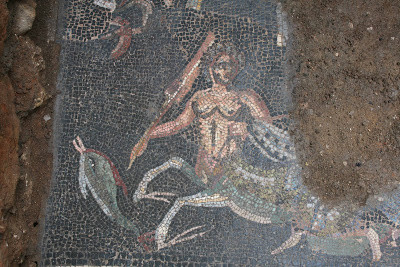
The middle part of the mosaic depicts a walrus and two figures of Eros. One of the men holds the reins of the walrus and the other rests his head on his hand in the pose of a "thinker". "This is an impressive composition that, upon being uncovered in its entirety, will present a "sea group" consisting of dolphins, Cupids, the Nereids who ride mythical sea creatures, and ichthyocentaurs and horses. Similar themes have been discovered in compositions in the region of Ostia in Italy and in the house with red pillars in Tunisia," Mateos Koutsoumanis, archaeologist from the regional office for prehistoric and classical ancient discoveries, told Ethnos newspaper.
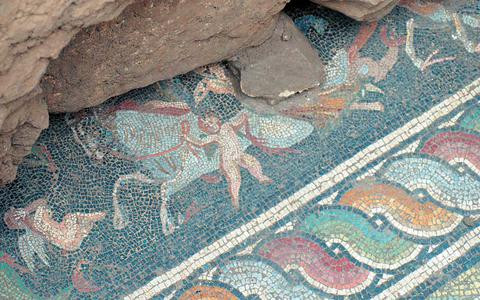
The western part of the mosaic depicts geometric patterns, one of which is "Solomon’s cube" full of meanders, whereas there are two separate parts at the bottom, decorated with birds and natural motifs.
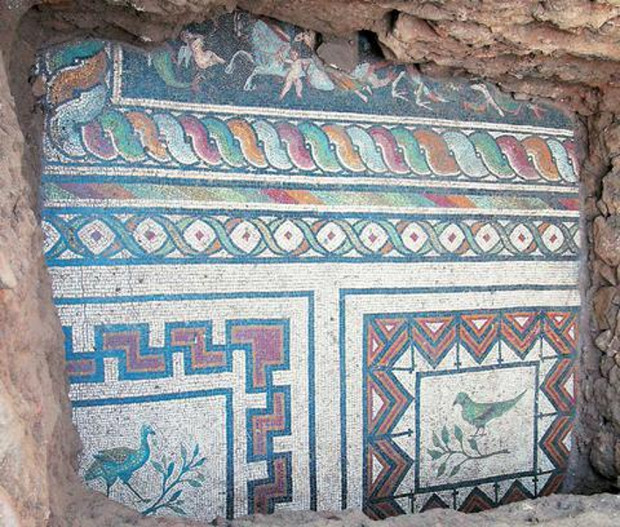
The whole mosaic is laid with glass pieces. Its frame depicts ivy leaves and spirals of plants that suggest the existence of a cult to Dionysus. "The most serious problem that has delayed the full uncovering of the mosaic is the presence of walls. We have found thick walls in different places that probably show how the room was used at a later time. The walls that have been removed so far have been placed on the mosaic and this is good because we can put them somewhere else. However, if we come across a wall that is built in the ground, it would have destroyed part of this great discovery," says the archaeologist.
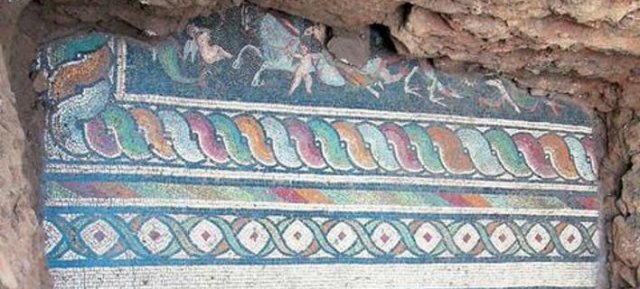
The mosaic dates back to the second half of the 2nd century and the beginning of the 3rd century AD and belongs to the triclinium-type baths consisting of a banqueting room with three beds. The course of the excavations has convinced archaeologists that the bath was public rather than part of a rich house. The walls as well as the four stone wheels, hoes and spears that were found this year show that the room had functioned as a pottery workshop in the early Christian era (4th-5th century).
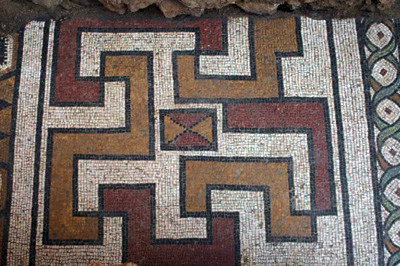
The building was continuously used until the 7th century, as evidenced by a coin that was minted during the reign of Emperor Phocas (602-610 AD) and it sank into decay in the following centuries. It was later abandoned, as was the whole city of Plotinopolis. It is possible that, at some point, the bath was used as a warehouse for grain storage in huge pots.
Plotinopolis was a Roman city founded by Emperor Trajan, who named it after his wife Plotinus. It was located northeast of the modern city of Didymoteicho on Saint Petra hill, where in 1965, during the construction of trenches, soldiers discovered a gold bust of Roman Emperor Septimius Severus, who ruled in the period 193-211 AD.